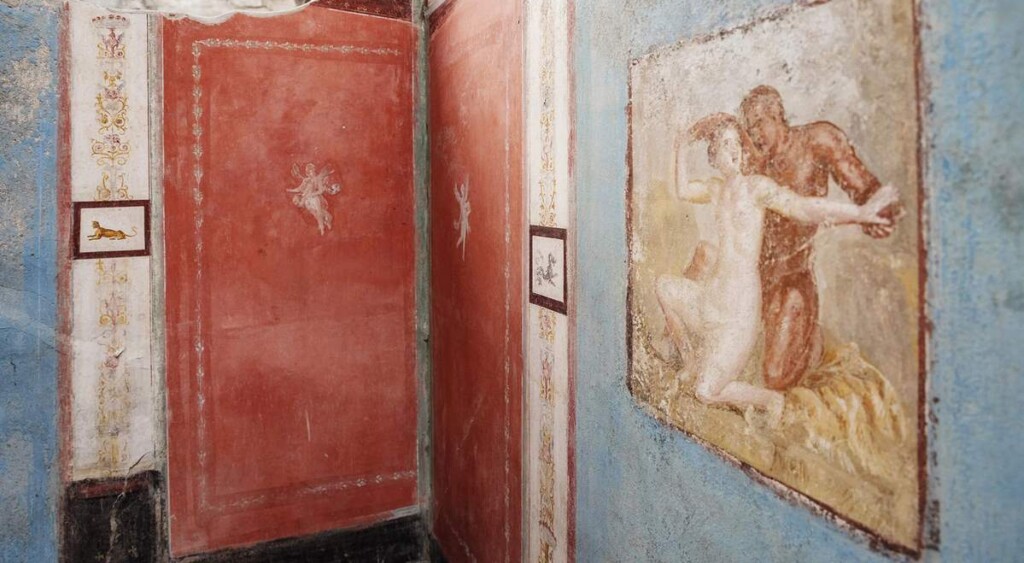 credit – Archaeological Park of Pompeii
credit – Archaeological Park of PompeiiAnother amazing building, preserved under the ash of Vesuvius, has been excavated at Pompeii.
This one demonstrates changes in the taste and design of Roman homes at the time of the eruption but also exhibits a variety of mythical scenes depicted in frescoes on the walls.
Found in the central district of the city, the first thing archaeologists and excavators noted was the lack of an open-air courtyard called an atrium that’s so typical of Roman domiciles large and small.
The volcanic ash and pumice that buried the large city have preserved artifacts in incredible detail, including the last ritual materials burned at the family shrine to the gods, called a lararium.
“We have archaeologists, restorers, archaeobotanists here to understand exactly how the ritual of the last sacrifice was carried out before the eruption,” said Gabriel Zuchtriegel, the park’s director, in a statement. “There are still the burnt remains of this ritual, there is the knife that was used.”
This excavation, Zuchtriegel added, “takes place under the eyes of the public” who can access the site on suspended walkways and watch archaeologists working.
Apart from these details, the most thrilling discoveries are the ornate frescoes that cover the walls, depicting various motifs of flowers and animals, but also scenes from mythology such as Venus with her mortal lover Adonis, a satyr engaged in intercourse with a nymph, and the judgment of Paris.
Another shows Theseus’ son Hippolytus and his stepmother Phaedra who fell in love with him. In the painting, Hippolytus is turning away, capturing the part of the story where Phaedra’s love is rejected, and she kills herself in anguish.
ALSO LOOK: Astonishingly Wealthy Pompeii Home of Two Men Freed from Slavery Reopens to Public
The preservation of frescoes at Pompeii is one of the many reasons why it stands among the most important historical/archaeological sites in all the world; not only for its significance in the story of humanity like that of Babylon or the Pyramids, but also the way it captures so many details—both big and small—about humanity and our story.
A great example of this is a wholesaler’s shop found in 2022 that amongst the wall decorations included a fresco with something that looks quite like a pizza.
OTHER DISCOVERIES FROM THE FAMOUS CITY: 2,000-Year-old Scroll Burnt in Pompeii Decoded and Read for First Time by Three Genius Students
The historians on staff were quick to remind the public that tomatoes are native to South America and mozzarella cheese hadn’t been invented yet, but the fresco could very well depict focaccia bread.
SHARE This Latest Discovery From Pompeii With Your Friends…
Source link

